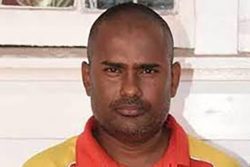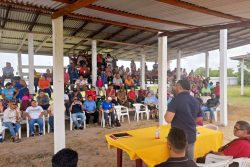The killing of a parent by a student at the Richard Ishmael Secondary School in Georgetown in November 2005, and of a schoolboy by a classmate at the Queenstown Community High School the previous year, perhaps, were the most egregious examples of school-based aggression and violence in recent years. But the present-day frequency of fights, gang-related brawls and other lawlessness suggests that, unless urgent and radical remedial action is taken, there will be more fatalities. Schools seem to be becoming more, not less, dangerous.
Earlier this month, for example, a 13-year-old student of the same Queenstown Community High School was seriously stabbed in a knife attack on her way home after having been involved in an altercation with another student who apparently brought his siblings to deal with her. Last month, rival gangs from the Carmel and Dolphin Community High Schools in Charlestown staged a street brawl which left some of the belligerents bleeding.
This newspaper previously reported incidents of gross indiscipline at the Lodge Community High School where a student struck a teacher in his head fracturing his skull; at Wisburg Secondary School in Linden where rival student gangs had committed acts of violence; at the Belvedere Primary School on the Corentyne where students of the Port Mourant Community High School threw an explosive device into the compound; and at the North Georgetown Secondary School where a youth gang entered the school compound and threatened a student with a gun, among others.
Although the community high schools feature most frequently, even the more prestigious schools are not immune from violent misbehaviour. In January, a 14-year-old Bishops’ High School student was stabbed during a ‘disagreement’ over a game of cards in the school compound and, in July last year, a 15-year-old Queen’s College student robbed a taxi-driver in Kitty with a .32 pistol.
Official responses have failed to curb dangerous school violence. Chairman of the Teaching Service Commission Mrs Leila Ramson announced in June last year that, for the first quarter of the year alone, the commission punished 80 teachers, 30 of whom were dismissed on grounds of misconduct and “sexual molestation.” Little wonder that students behave as they do. Chief Schools’ Welfare Officer Ms Banmattie Ram, reporting on the increasing incidence of students’ being found to be in possession of narcotics, said that her department was “working to discourage” the use of illicit drugs in schools.
There seems to be no real plan to deal with the wave of misbehaviour. Minister of Education Mr Shaik Baksh promised to appoint a larger number of school welfare officers “to monitor the situation.” In 2007, he had announced that all public schools will be declared ‘No smoking’ zones and students will not be allowed to use mobile telephones in classrooms. His predecessor Dr Henry Jeffrey thought that if the Ministry of Education’s Manual of Guidelines for the Maintenance of Order and Discipline in Schools was properly implemented, indiscipline problems would be reduced. He too promised to look at “a comprehensive approach to problematic areas such as this.”
Did the two ministers ever think that their nostrums could cure the cancer of school violence? The palliative and punitive expedients have not worked. Schools cannot correct every social problem and teachers cannot become substitute parents for delinquents but, if schools are to be made safer, the Ministry of Education must rethink its schools’ security strategy. Together with the Ministry of Home Affairs and the Ministry of Human Services and Social Security, it must plan to improve the conditions in which their children come to school ready and willing to learn rather than fight.









